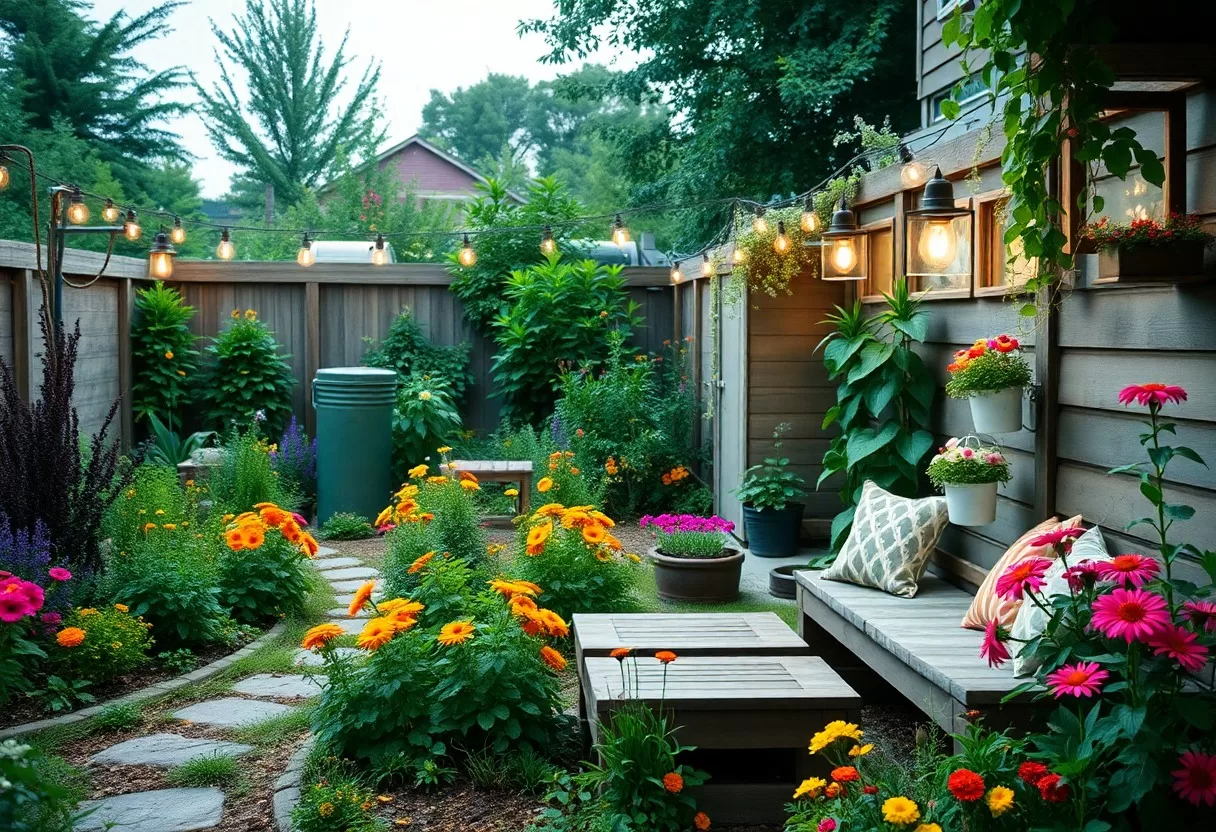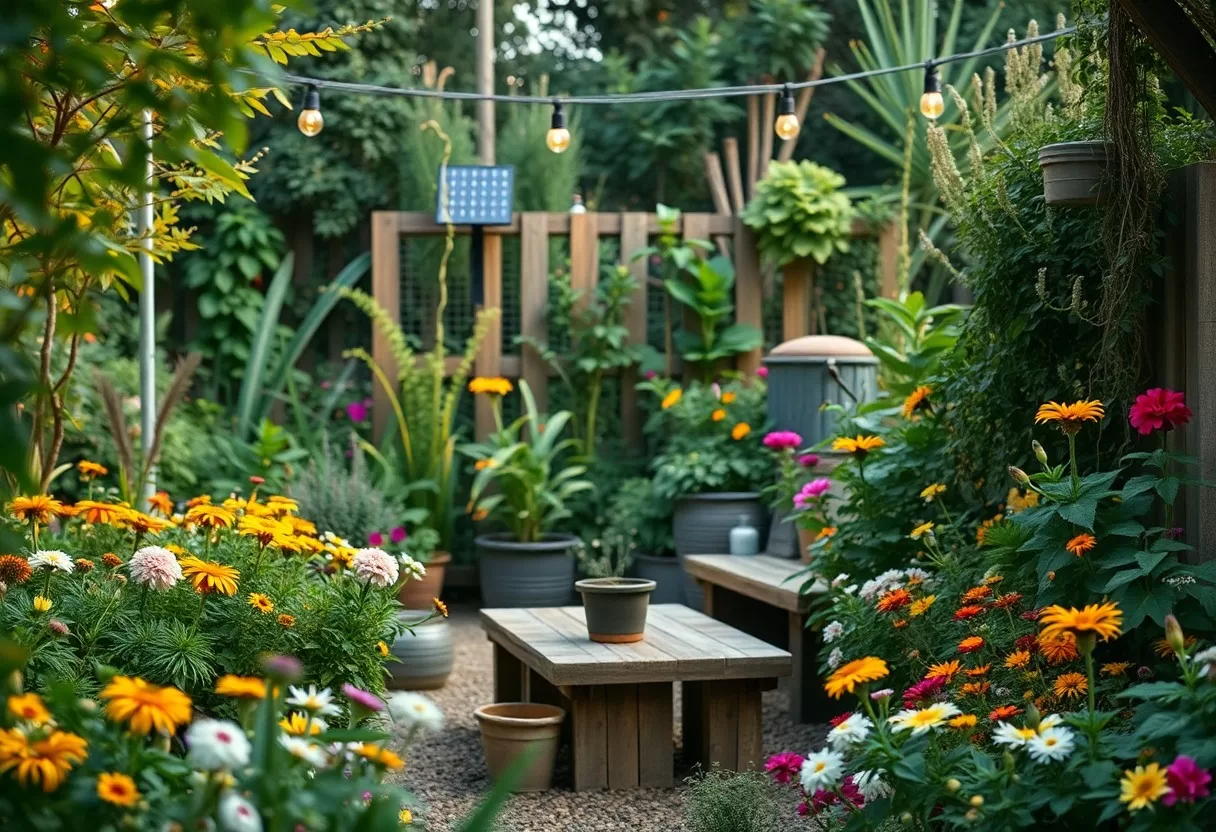With the growing need for environmental stewardship, adopting sustainable garden practices can transform your backyard into an eco-friendly oasis. By integrating techniques such as composting, rainwater harvesting, and native plant gardening, you not only improve your garden’s health but also contribute positively to the environment. Understanding the benefits of reducing chemical usage and enhancing biodiversity will empower you in creating a sustainable space that thrives while nurturing the planet. Join the movement towards sustainability and discover how your gardening choices can lead to a more harmonious relationship with nature.
Key Takeaways:
- Choose native plants that require less water and maintenance, promoting local biodiversity.
- Implement composting to enrich soil quality while reducing waste and chemical fertilizers.
- Utilize rainwater harvesting systems to conserve water and reduce dependency on municipal supplies.
- Opt for organic pest control methods, such as beneficial insects, to maintain a healthy ecosystem.
- Encourage pollinators by incorporating flowering plants, which supports food production and natural habitats.
Designing Your Paradise: Principles of Eco-Conscious Garden Layout
Creating an eco-friendly garden begins with thoughtful design that respects the natural environment. Prioritize a layout that promotes sustainability by incorporating elements like rain gardens, permeable pathways, and mulch beds to enhance water conservation. Consider 11 Eco-Friendly Ways to Turn Your Backyard into An Oasis … that introduce diverse ecosystems while minimizing resource consumption. Emphasize zones for both native flora and edible plants, ensuring a beautiful yet functional space that fosters resilience in your garden.
Embracing Native Plants for Biodiversity
Integrating native plants into your landscape enhances local biodiversity and promotes a healthier ecosystem. These plants are well-adapted to your region’s climate and soil conditions, requiring less water and maintenance compared to non-native species. By attracting pollinators like bees and butterflies, native plants create a natural habitat that supports various wildlife, ultimately enriching your garden’s biodiversity and resilience.
The Art of Companion Planting to Enhance Growth
Companion planting pairs plants that mutually benefit each other, optimizing growth and deterring pests naturally. For example, planting marigolds alongside tomatoes can ward off nematodes, while basil boosts the flavor of tomatoes and repels certain flies. This ancient technique encourages a healthier garden ecosystem, minimizes reliance on chemical fertilizers and pesticides, and enhances your yield significantly.
Exploring companion planting can unlock the full potential of your garden. For instance, planting legumes like peas can help fix nitrogen in the soil, benefiting neighboring plants. Similarly, planting garlic next to roses can deter aphids, giving your blooms a fighting chance against common pests. This strategic method not only promotes healthier plants but also maximizes your garden’s spatial efficiency, allowing you to enjoy a bountiful harvest while upholding sustainable practices.
Harnessing Nature: Water Management Strategies
Efficient water management strategies anchor your sustainable garden, ensuring that plants receive the necessary hydration without straining local resources. Techniques like rainwater harvesting and drought-resistant gardening not only preserve water but also enhance your garden’s resilience. By embracing these practices, you can Create an Eco-Friendly Oasis with Sustainable Landscape Design!
Implementing Rainwater Harvesting Systems
Rainwater harvesting allows you to collect and store rainwater for irrigation and other purposes, significantly reducing your reliance on municipal water systems. Utilizing barrels or cisterns placed under downspouts captures runoff efficiently, preserving precious natural resources while offering a cost-effective solution for your garden’s needs.
Incorporating Drought-Resistant Gardening Techniques
Drought-resistant gardening techniques emphasize plant selection and landscape design aimed at minimizing water usage. Opt for native plants that thrive in your region’s climate; these species are naturally adapted to rainfall patterns and soil types, needing less water overall. Additionally, grouping plants with similar water needs reduces waste and enhances the health of your garden ecosystem.
When incorporating drought-resistant gardening techniques, aim to create a layered planting structure. Taller plants can provide shade for smaller, sun-sensitive species, reducing overall evaporation. Mulching is another effective method, as it helps maintain soil moisture and suppresses weeds that compete for water. Consider using rock gardens or xeriscaping practices, which utilize gravel and drought-loving plants to create visually appealing and water-efficient designs. Ultimately, transitioning to a drought-resistant garden can cut your water consumption by up to 50%, making your oasis a sustainable sanctuary.

Soil Health: The Foundation of Sustainability
Soil serves as the backbone of any garden, supporting plant life and providing necessary nutrients. Healthy soil is a diverse ecosystem teeming with microorganisms, organic matter, and minerals that work in harmony to create a flourishing environment. To establish a sustainable garden, you must focus on building and maintaining soil health, which directly influences plant growth and resilience against pests and diseases.
Understanding the Role of Compost and Mulch
Compost and mulch play pivotal roles in enhancing soil health. Compost enriches the soil with vital nutrients and improves its structure, encouraging the presence of beneficial organisms. Similarly, mulch acts as a protective blanket, reducing evaporation, suppressing weeds, and maintaining consistent soil temperatures. Integrating these elements into your garden not only boosts productivity but also fosters a resilient ecosystem.
Practicing No-Till Gardening for Soil Preservation
No-till gardening preserves the soil structure and microbial life that traditional tilling often disrupts. By minimizing soil disturbance, you allow organic matter to remain intact, promoting a vibrant underground community that supports plants’ growth. This method helps retain moisture, reduces erosion, and enhances nutrient cycling, ultimately leading to a more productive and sustainable garden system.
Embracing no-till gardening can have a transformative effect on your garden’s health. Studies suggest that it can increase soil organic matter levels by 0.2 to 0.4 percent per year, significantly enhancing nutrient availability. Furthermore, fewer disturbances mean communities of beneficial organisms can thrive, leading to increased resilience against pests and diseases. Implementing cover crops or applying organic matter directly to the soil surface can help you adopt this practice smoothly while creating a thriving, sustainable environment for your plants to flourish.

Pest Control: Navigating the Balance
Pest control in your garden doesn’t have to mean turning to harsh chemicals. Embracing sustainable practices allows you to manage pests while protecting beneficial organisms and the overall ecosystem. Striking a balance between eradicating harmful pests and supporting a diverse array of garden life will help your garden thrive in harmony.
Utilizing Integrated Pest Management (IPM) Approaches
Integrated Pest Management (IPM) is a holistic strategy focusing on long-term prevention of pests through a combination of techniques. It emphasizes monitoring pest populations, understanding their life cycles, and employing cultural, mechanical, and biological controls before resorting to chemical options. By taking a proactive approach, you minimize risks to your garden and the environment.
Attracting Beneficial Insects for Natural Pest Deterrence
Enhancing your garden’s biodiversity can be as simple as attracting beneficial insects that act as natural predators to harmful pests. Ladybugs, lacewings, and parasitic wasps are excellent allies in pest control, targeting aphids, caterpillars, and other garden nuisances. By creating habitats that invite these beneficial insects, you cultivate a sustainable balance that supports your garden’s health.
To attract these helpful allies, consider planting a variety of native flowers, herbs, and other plants that provide nectar and pollen throughout the growing season. Dandelions, mustards, and yarrow are particularly effective at drawing in predator insects. Avoid using pesticides, as these can harm beneficial species. Instead, focus on fostering a thriving ecosystem, and you’ll find that as your beneficial insect population grows, pest issues tend to decline naturally—resulting in a healthier, more resilient garden.
Engaging the Community: Building a Sustainable Gardening Culture
Fostering a culture of sustainable gardening extends beyond your own plot; it requires community involvement. Engage your neighbors and local organizations to share knowledge, resources, and support each other’s eco-friendly efforts. Hosting community events, sharing your successes and challenges, and collaborating on projects cultivates a sense of ownership and pride while promoting sustainable practices throughout your neighborhood.
Organizing Workshops and Gardening Clubs
Hosting workshops and forming gardening clubs are excellent ways to bring like-minded individuals together. These gatherings offer opportunities to share best practices, experiment with different techniques, and learn about sustainable gardening methods. By providing a platform for discussion and hands-on demonstrations, you help create a supportive environment where community members can grow both their plants and their knowledge.
Inspiring Local Initiatives for Environmental Stewardship
Encouraging local initiatives targeted at environmental stewardship ensures that sustainable practices expand beyond individual gardens. Partnering with schools, local businesses, and eco-conscious organizations can lead to projects like community composting programs, urban tree planting days, or neighborhood clean-ups. These initiatives not only improve the local environment but also raise awareness and inspire others to adopt sustainable practices in their homes. For example, organizing a series of school garden projects not only teaches children about growing food but instills a lasting respect for nature.
Final Words
To wrap up, embracing sustainable garden practices allows you to create an eco-friendly oasis that not only benefits the environment but also enhances your outdoor space. By implementing techniques such as organic gardening, water conservation, and promoting biodiversity, you foster a healthier ecosystem and minimize your ecological footprint. Your garden can serve as a sanctuary for both you and local wildlife while providing fresh produce and beauty. Begin this rewarding journey today, and enjoy the myriad of benefits that come with sustainable gardening.
